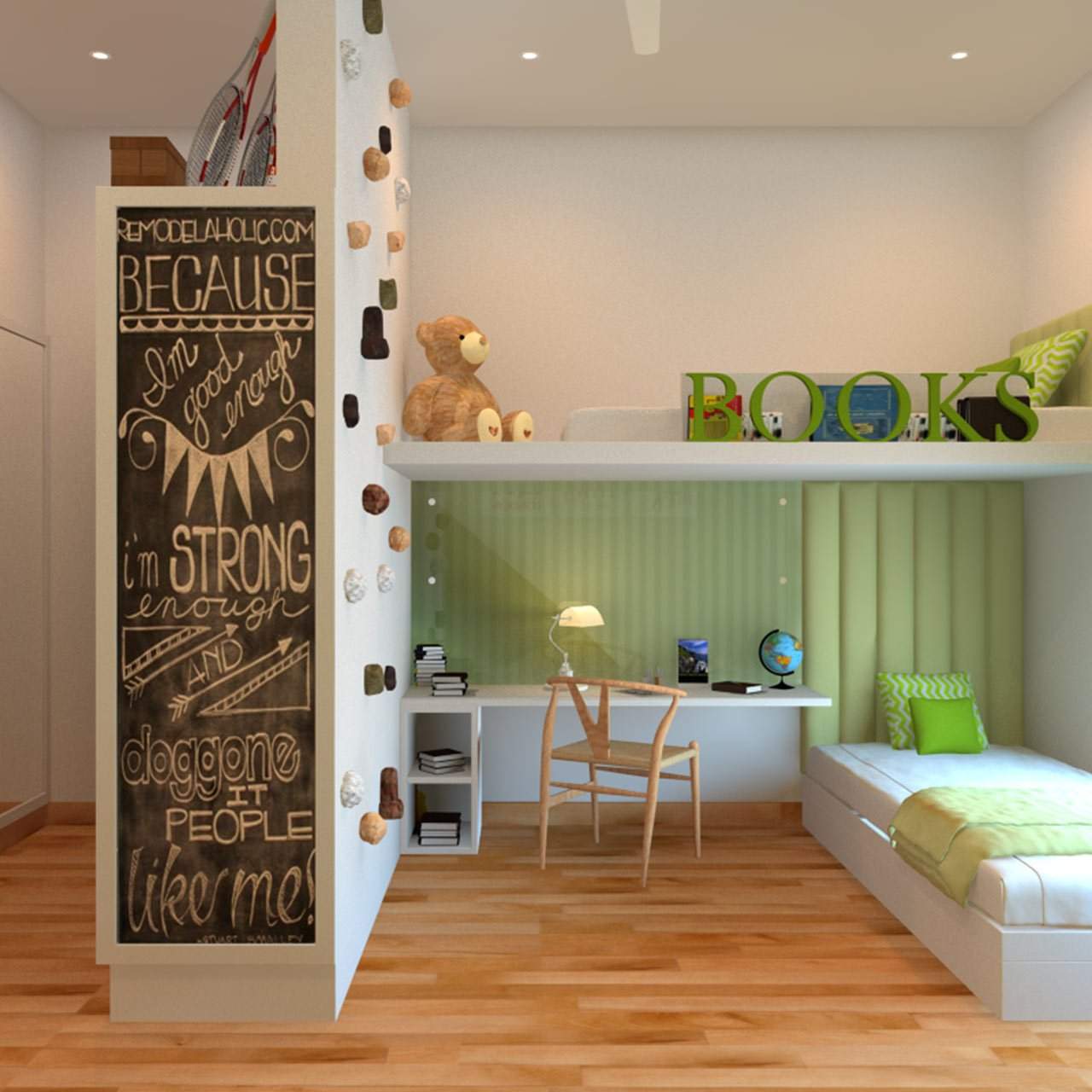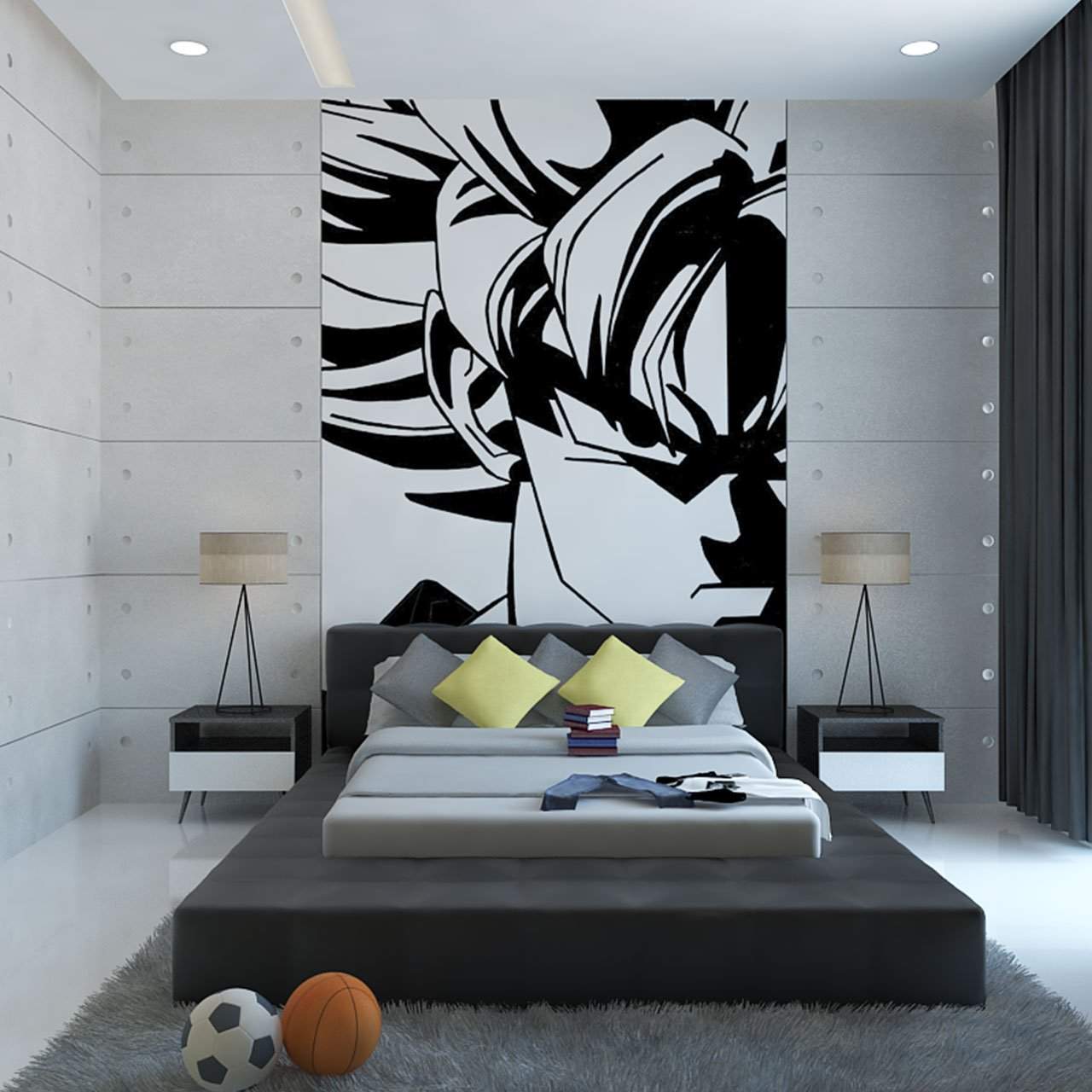A Guide To Kids Bedroom Interior Design
Kids bedroom cannot follow the same design and decor ideas that favour the rest of the home. While function and aesthetics play a significant part in almost all rooms, kids bedroom designs need a reverse approach. Besides considering the micro-dynamics of this space, what you need to consider is how to design a kid’s bedroom that stands out from the rest of the home.
And it’s alright not to know where to start with the design. Do you choose the colour of the room first or decide what pieces of furniture to bring in? Will wallpaper look better or a neutral wall colour? Will you be able to keep things organised or do you foresee permanent chaos in the bedroom? It can be a daunting experience to consider so many factors while designing the most vibrant room of your home. Let us make it simple for you with this guide on how to design a kids bedroom with the most suitable interiors.

Create A Multifunctional Space In Your Kids Bedroom
Most kids’ bedrooms double up as play and sleeping areas. They study, play, perform activities and even catch up with their little friends in their rooms. It is wise to design their bedrooms, in such a way that the design lasts for at least a couple of their growing years. Ensure there are separate chairs and tables for their homework, keep the play area with carpeting separate. Place bed frames in a way that it doesn’t interfere in any of their activities. Coming up with a multifunctional interior design for children’s bedrooms not just throws up many possibilities but also helps you become more inventive to the kind of furniture you will use.

How To Design A Kids Bedroom With Plenty Of Storage?
Irrespective of how much storage you decide to have in your kids’ bedroom, it will still fall short. The trick to doing it is therefore not to create bulky, annoying cupboards and drawers but in-built storage that can be tucked away behind bright paints, delectable rugs and whimsical curtains. Children’s interior designs for bedrooms look lovely with stacked storage against walls, toy segregator boxes, open shelves for books or soft toys, and furniture that doubles up as toys or artworks. Children can write, draw or walk over any furniture. Therefore something not too heavy or expensive, yet which can be moved around and open works well for them.
How To Design A Kids Bedroom That Has Activity Spaces?
As much as children love being all over the space with their toys, they become better focused when working around areas specifically designed for particular tasks. Crafting a small kitchenette with mock utensils and cutleries, building wall niches where they can climb up and down, building makeshift lofts mimicking climbing trees will keep them busy for hours. And they look gorgeous too! Don’t believe it? Look up some trending children’s room interior images! These don’t require much planning and can be easily dismantled as they grow older.
How To Design Kids Bedroom That Feature Lighter Coloured Walls
As much as it is tempting to splash bright blotches of colour on children’s bedroom walls, it helps to make this decision when they are much older. Their likes and dislikes get more precise as they grow, and it will help you make wiser decisions. When children are small, white, pastels and other neutral shades work better for children’s bedroom interiors. These can be supplanted with colourful, quirky furniture, bright curtains and vibrant rugs and carpets. Little children also tend to write and scribble on walls, and neutral walls make it easier to paint over frequently.
Using Artwork As Wall Decor For Kids Bedroom Interior Design
With neutral walls and minimal decor, a kids bedroom resembles a blank palette. Use them to display their artwork, paintings and crafts. What better way to brighten up space and personalise it than this activity? Art by children cannot be bracketed or boxed. It is their interpretation of the world, and these can be collected for posterity in the long run too.
How To Design A Kids Bedroom That Infuses Learning Into The Space?
Children learn more from subtle influences than actually being taught anything. A child’s bedroom can be their first learning space, and there’s plenty you can do to build it into their space. From creating large wall maps that they can spend hours poring over, to animal origami figures adorning their desks, from walls embellished with varied butterfly species to furnishings of different materials, colours and textures – the possibilities are endless. Make your child’s bedroom their little school and watch how they remember this for the rest of their lives.
How To Design A Kids Bedroom That Personalises Their Passions?
Children when young are passionate about many things, and they often live and breathe their passion. A football enthusiast will carry the sport with her wherever she goes while an artist is bent on filling his little bedroom with scribbles. Children are born creators and their passions can be infused into their rooms. A sports enthusiast can have his wall and ceilings resemble a badminton court and a passionate little car enthusiast can sleep on a bed-shaped car. There are so many passions that these kids have, which can be splurged on their walls.
Layer The Lighting In Your Children’s Room Interiors
A kid’s bedroom sees plenty of activity, from long groaning homework sessions to playdates, from bedtime reading to tumbling across floors. Multiple layered lighting caters to their different needs without seeming overwhelming. Focused task lights like table lamps, softer lighting for more relaxed activities, twinkling lights for stars and brighter ones when kids come over, the options for them are limitless. A child’s bedroom packs all the space of a generic home, and these must be considered before designing their space.
How To Design A Kids Bedroom With Curtains And Meshes?
Children love the whimsical. It reminds them of castles, fairies, secret gardens, the night skies and journeying into a dream. These can easily be recreated in a kids bedroom with lace curtains, airy and feathery curtains, little nooks for them to hide and layered furnishings. The softer and warmer they find their space, the more they will create and spend hours overplay.
Children’s bedroom interiors aren’t as simple to design as we make them out to be only because we’re catering to the needs of a growing individual. This changes at every stage of their lives. Bedrooms also need to change, their designs which begin simplistically become more defined and personalised. Understanding your child and being flexible with bedroom interiors goes a long way in giving him/her a room they will always want to come back to.










